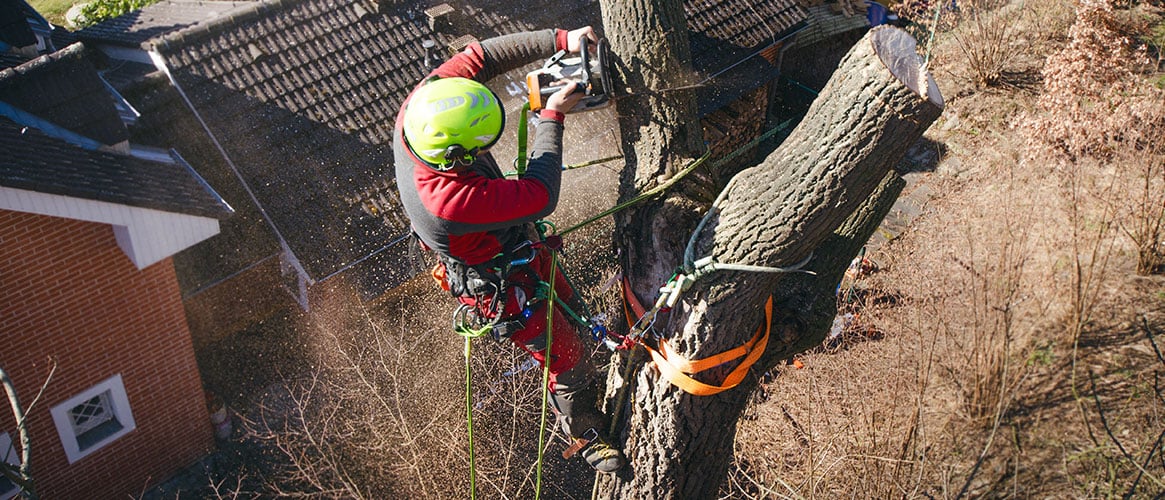PPE for tree trimmers
The proper PPE that will need to be provided to your employees are:
- Safety glasses to help shield their eyes from wood chips and other objects
- Hearing protection such as ear muffs or ear plugs to help prevent hearing loss
- Climbing line and work positioning lanyard
- Hand protection to protect from cuts and lacerations
- Cut resistant pants or chaps when using a chainsaw
- Boots with a non-slip sole and protective toe to help prevent slip, fall, and crush injuries
- Reflective vests when working near traffic
Before starting a job, employees must inspect their PPE including their climbing lines, ropes, and lanyards to ensure that it is in good working order with no visible signs of fraying or other damage.
What your employees need to do to work safely while trimming trees
Anytime an employee is working in a tree, they must wear a tree-worker’s saddle and have two means of being secured, such as a climbing line and work-positioning lanyard. While an employee is climbing the tree, the employee must be tied in or secured the entire time until they have returned to the ground. Some important reminders are:
- Always check the condition of the limbs, branches, and tree trunks before cutting them.
- Tie your safety equipment to strong branches that can support the weight and use those branches to climb.
- Do not carry tools or equipment by hand when climbing the tree.
- Ensure you are able to maintain three points of contact at all times and are only moving one hand or a foot at a time, with your hands and feet on separate branches.
- Inspect your chainsaw prior to use to ensure it is not damaged and is in good working condition.
Working near overhead power lines and electrical equipment
If employees are to conduct any work near electrical equipment they need to receive specialized training.
Overhead power lines should always be considered as energized. Electrical shock can occur by making direct contact with the power line, or indirect contact with an energized electrical conductor, an energized tree limb, a tool, a piece of equipment, or another object. Electricity can jump from a power line to a nearby object, so your employee does not have to be directly touching the power line itself to be at risk.
Before starting the job, it is important to contact the local utility company for their assistance.
Struck-by injuries
Struck-by injuries involving tree work are caused by falling trees, falling branches, and hand tools. During a job site briefing, and prior to the start of pruning or removal operations establish a method of verbal or visual communication, between workers in the tree and the ground crew. Your QTW will also identify a drop zone, which is an area where items may be dropped or lowered, and other employees should maintain a safe distance.
What to cover at your safety meeting on tree trimming
Discuss the importance of having a QTW and how they help employees safely trim trees and review your equipment’s manufacturer manual. Other topics to cover include:
- Inspecting PPE and how to use it properly
- Inspecting chainsaws and other tools for damage
- Removing damaged equipment from service
- Identifying nearby electrical hazards
- Identifying the drop zone is for cut branches
- Identifying and adjusting to weather conditions
If the QTW observes unsafe behaviors as work is taking place, that person may call an impromptu safety meeting to address and correct those issues.
Trimming trees can be dangerous and can put your employees at risks of falls. Make sure you have a QTW on site, that your employees understand the role of the QTW, and that your employees understand and follow your safety procedures to avoid falls and other injuries on the job.

